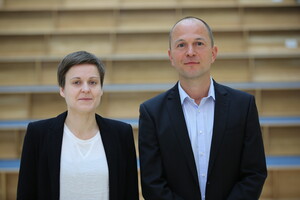Social events – An event coding approach to echophenomena in GTS

Echophenomena belong to the core symptoms of GTS, being present in at least 20‐30% of GTS patients and distinguishing ‘pure’ GTS from the most common comorbidities ADHD and OCD. Echophenomena in GTS comprise both echopraxia, denoting the automatic imitation of others’ actions, and echolalia, referring to repetitions of sounds and language. Although echophenomena are very common, there is only little empirical work delineating the cognitive and neural mechanisms underlying automatic imitation in GTS. Common coding approaches to action and perception including the Theory of Event Coding (TEC) are suitable candidates to conceptualize automatic imitation, which can be considered the prime example of actionperception matching. This theoretical framework and behavioural evidence is dovetailed by a decade of research on the ‘mirror neuron system’ as the putative neurobiological basis of a joint representation of action and perception. Such joint representation has been demonstrated to be relevant not only for understanding others’ actions, but also others’ sensations and emotions. This raises the questions whether echophenomena in GTS relate (i) to altered functioning of the mirror neuron system and (ii) more generally to an altered neural representation of others’ sensations and emotions. With the present project, we aim to address these questions with a series of EEG‐ and fMRI‐studies.

